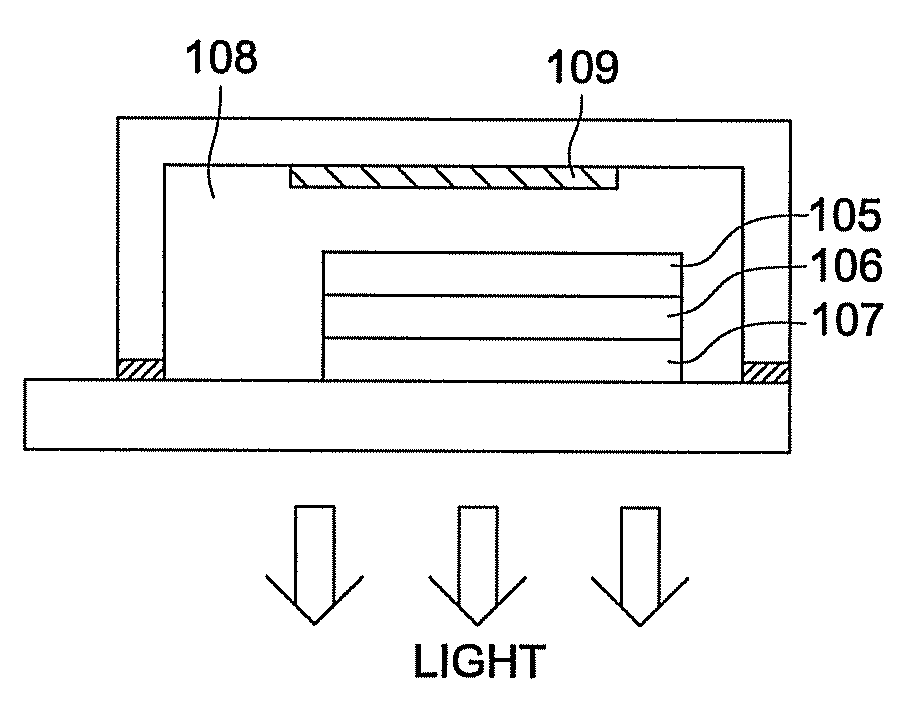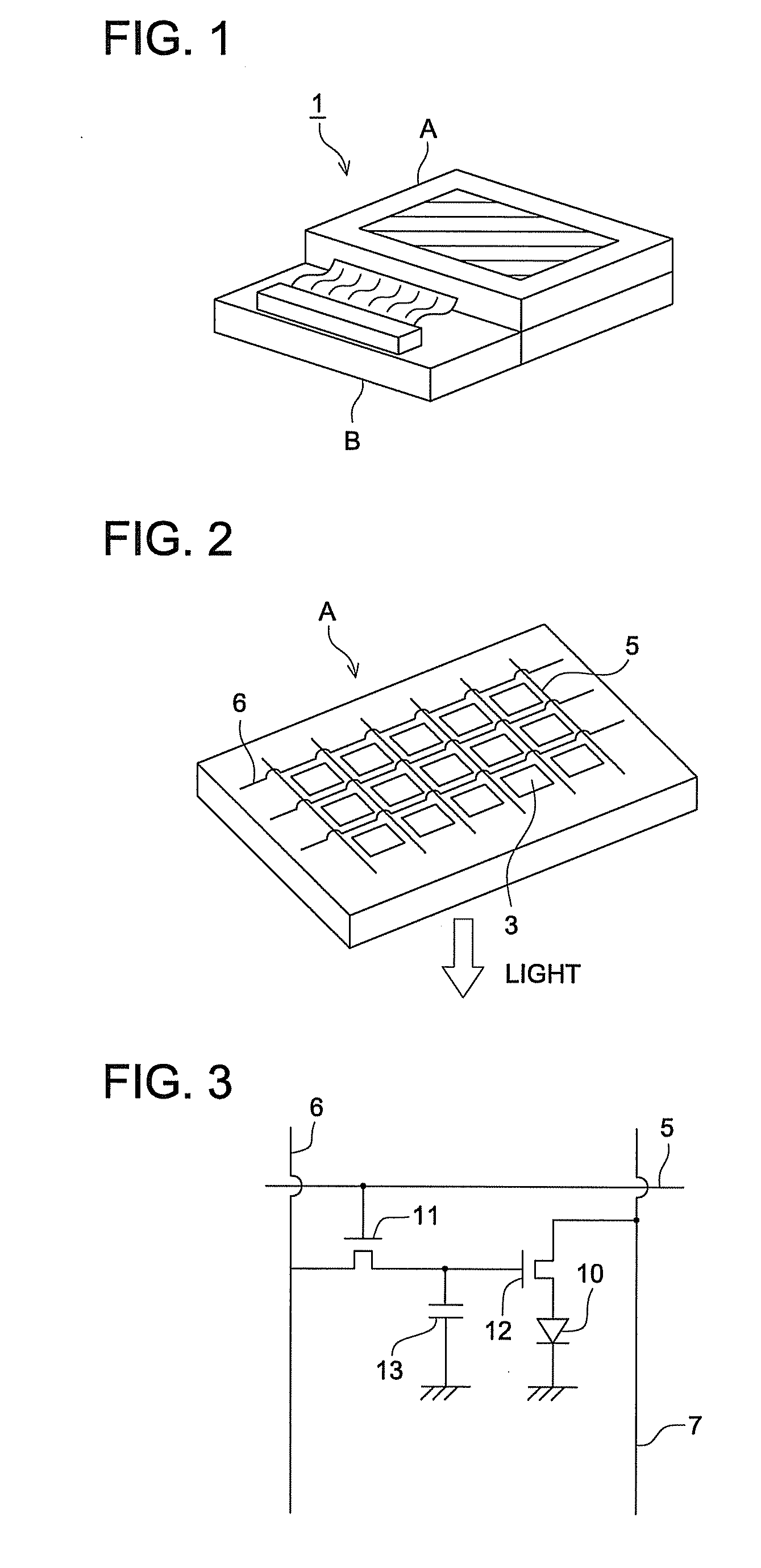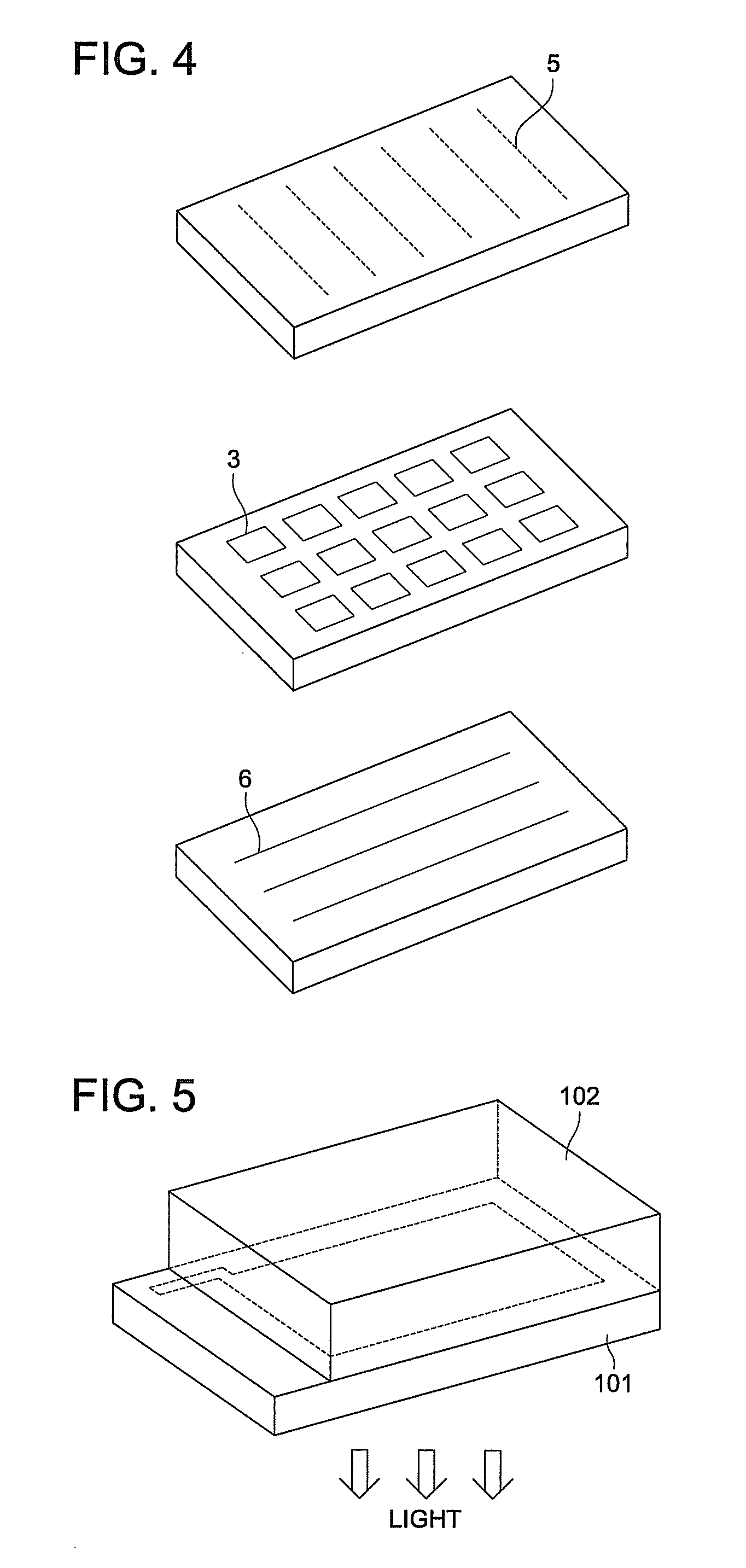Organic electroluminescent device, display and illuminating device
- Summary
- Abstract
- Description
- Claims
- Application Information
AI Technical Summary
Benefits of technology
Problems solved by technology
Method used
Image
Examples
synthetic example 1
Preparation of Exemplified Compound 1-9
[0072]
[0073]Compound (3) of 22 g and 16 g of iodine were added to a solution of 90 ml of acetic acid and 90 ml of acetic anhydride, 12 g of Compound (1) were added thereto in five minutes, and two or three drops of sulfuric acid were added. The resulting mixture was stirred for 30 minutes. The reaction mixture was poured into 600 ml of an aqueous 5% sodium sulfite solution, added with 5 g of sodium carbonate, and filtered under reduced pressure to obtain crude product. The resulting product was suspended in 300 ml of acetone while heating, and filtered under reduced pressure to obtain 3.5 g of Compound (2) (yield 12.7%).
[0074]Subsequently, 2.7 g of Compound (2) were dissolved in 70 ml of THF, and 0.91 g of NaBH4 was slowly added to the solution. The resulting solution was cooled with ice water, dropwise added with 1.1 ml of dimethyl sulfate in 15 minutes, and stirred at room temperature for 4 hours. The reaction mixture was washed with a satura...
synthetic example 2
Preparation of Exemplified Compound 3-1
[0076]
[0077]Compound (3) of 6.3 g and 4.7 g of iodine were added to a solution of 22 ml of acetic acid and 22 ml of acetic anhydride, 3 g of Compound (6) were added thereto in five minutes, and two or three drops of sulfuric acid were added. The resulting mixture was stirred for 20 minutes. The reaction mixture was poured into 300 ml of an aqueous 5% sodium sulfite solution, added with 1 g of sodium carbonate, and filtered under reduced pressure to obtain crude product.
[0078]The resulting product was recrystallized from chloroform to obtain to obtain 4.7 g of Compound (7) (yield 62.2%).
[0079]Palladium acetate of 0.091 g and 3.20 ml of a 10% tri-tert-butylphosphine xylene solution were mixed at 50 to 60° C. for 30 minutes under nitrogen atmosphere. Subsequently, 40 ml of anhydrous xylene; 1.5 g of Compound (7), 1.3 g of Compound (5) and 0.78 g of sodium t-butylate were added to the mixture and refluxed for 5 hours. The resulting reaction mixture...
example 1
Preparation of Organic EL Element samples 1-1 Through 1-20
[0166]A pattern was formed on a substrate (NA45, manufactured by NH Technoglass Co., Ltd.) composed of a glass plate (100 mm×100 mm×1.1 mm) and a 100 nm ITO (indium tin oxide) layer as an anode. Then the resulting transparent substrate having the ITO transparent electrode was subjected to ultrasonic washing in isopropyl alcohol, dried by a dry nitrogen gas and subjected to UV-ozone cleaning for 5 minutes. The thus obtained transparent substrate was fixed on a substrate holder of a vacuum deposition apparatus available on the market. Further, 200 mg of α-NPD were put in a first resistive heating molybdenum boat, 200 mg of CBP as a host compound were put in a second resistive heating molybdenum boat, 200 mg of bathocuproine (BCP) were put in a third resistive heating molybdenum boat, 100 mg of Ir-12 were put in a fourth resistive heating molybdenum boat, and 200 mg of Alq3 were put in a fifth resistive heating molybdenum boat. ...
PUM
| Property | Measurement | Unit |
|---|---|---|
| Volume | aaaaa | aaaaa |
| Fraction | aaaaa | aaaaa |
| Fraction | aaaaa | aaaaa |
Abstract
Description
Claims
Application Information
 Login to View More
Login to View More - R&D
- Intellectual Property
- Life Sciences
- Materials
- Tech Scout
- Unparalleled Data Quality
- Higher Quality Content
- 60% Fewer Hallucinations
Browse by: Latest US Patents, China's latest patents, Technical Efficacy Thesaurus, Application Domain, Technology Topic, Popular Technical Reports.
© 2025 PatSnap. All rights reserved.Legal|Privacy policy|Modern Slavery Act Transparency Statement|Sitemap|About US| Contact US: help@patsnap.com



